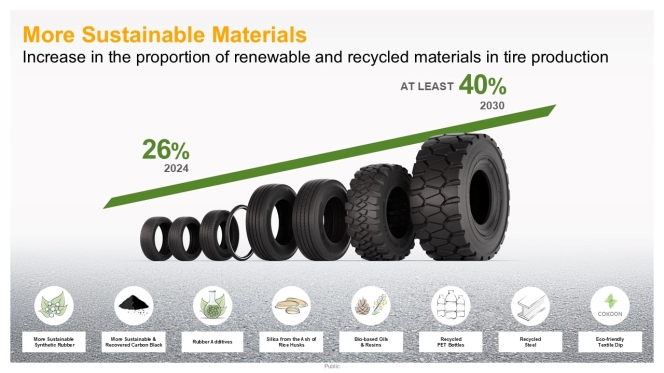
Due to COVID-19 pandemic, work-from-home using internet has become a growing way of connecting with associates and clients. This year, internet use has nearly doubled, due to work-from-home and lockdowns. But internet is a risky environment, especially when connecting your mobile devices to a public network. You are at an airport and connect to its public Wi-Fi network. But you are unaware that there is a hacker lurking around the corner, monitoring the internet traffic and ready to hack into your personal account. It is estimated that there are over 450 million public Wi-Fi hotspots globally, offering a rich hunting ground for cyber criminals.
Cyber specialists tell us that currently there are more than 375 malicious threats PER MINUTE and growing. Mobile malware threats grew by a whopping 70% in Q1-2020 over Q3-2019! Cyber criminals have generated 113,000+ malicious URL’s related to COVID-19, targeting healthcare, education and banking in particular. Cybercriminals steal personal and company information by hacking into our susceptible computers and mobile devices. Cyber-attacks are especially devastating for small businesses - industry data shows that a staggering 60% of small companies, which have been hacked by cyber criminals, go out of business within 6 months after the attack.
While business operations, from conceiving an idea to its final delivery to the user, are going digital at breakneck speed, the entire operational areas remain vulnerable to cyber malfunctioning in one form or other. This impact the operations very hard short-term as well as long-term. Cyber security threats can be due to inherent flaws within the system. But the possibility of deliberate cyber-attacks and hacking from one source or the other is abundant. As competition and market battles hot up, this remains a real danger.
The risk covers a large area. One of the biggest threats is the compromising of vital data. This includes important technical details, hard-earned market information, customer information etc. Loss of data can bring the operation to a halt at great financial impact. As hinted, the problem can be due to malfunctioning of the software or external interference to steal the data.
Either way, the cost of recovery is immense, not to talk about the time lost in the process. Hidden or not, these expenses will have a big role in fixing the final profit and loss accounts.

Adding to this is the loss of credibility of the business. The output will be negatively impacted and the company will have to do great degree of explanations to the customer. It is an equal task to recover lost data and to recover lost credibility. Consumers have other options and look elsewhere. But the company cannot afford that luxury.
While the margin for deliberate external intrusion possibilities remains large, many of these security breaches are caused by human error. One needs to realise that however deep an entity goes digital, there is always that unavoidable human touch that makes it run. AND, to err is human!
This underlines the need for proper intense training. There are studies that say employee ignorance is one of the leading contributors. Workers may know the essential basics of an application, but that does not make him or her a cyber security expert. While the IT departments execute a new cloud computing initiative or new application software, they have to ensure that those handle it on a daily basis are equipped to manage a crisis.
Types of cyber threats
Cyber threats are ever-evolving and cybercriminals use different types of malware to get what they want. Malware is an abbreviated form of “malicious software.” This is software that is specifically designed to gain access to or damage a digital device, usually without the knowledge of the owner.
Crypto jacking: Malware that gives cybercriminals access to “mine” cryptocurrency on your computer, at the expense of your resources.
Form jacking: Malware in which cybercriminals inject malicious code into online forms to steal payment card details on legitimate websites.
Ransomware: It is a malicious software that uses encryption to hold data for ransom, the purpose of which is to extort money from the victims with promises of restoring encrypted data. Like other computer viruses, it usually finds its way onto a device by exploiting a security hole in vulnerable software or by tricking somebody into installing it.
Phishing: These are fake emails that can look surprisingly legitimate. If you get tricked into clicking a link or providing information, thieves can get your passwords and account numbers.
Zoom Bombing: Intruders hack into online meetings.
Remote Access Trojans (RAT): Malware that gives a cybercriminal a “back door” to remotely access a compromised computer.
Spyware: It is unwanted software that infiltrates your device, stealing your Internet usage data and sensitive information. Spyware gathers your personal information and relays it to advertisers, data firms, or external users.
Dark web: It is an underground online community where criminals can go to buy and sell your personal information.
Defense
All digital devices need to be protected using a highly-rated, proven anti-virus program. These programs provide a shield for your operating system in the form of a real-time scanner. When your antivirus program detects an infected file or program, it can delete it on the spot or move it to a special "quarantine" folder. When your antivirus quarantines a file, it prevents it from interacting with the rest of the computer.
A Virtual Private Network (VPN) creates a private network within a broader network, adding security by using encryption and tunneling mechanisms. There are some free VPN products available, but these may trade your information to help offset their costs, or impose other limitations, such as how much VPN data available per month. A paid subscription service may enable you to deploy a powerful, yet easy-to-use VPN that protects your Wi-Fi connections, bandwidth and privacy with guarantees against any losses. These VPN’s work with all digital devices - PCs, Macs, smartphones and tablets.
It goes without saying that users of all digital devices that use Wi-Fi connectivity must become more mindful of cybersecurity needs, and companies must invest in security programs and ongoing employee training.
Vaculug Acquires Scotland's Tyrefair To Drive Northern Expansion
- By TT News
- September 11, 2025

Vaculug, Europe’s largest independent retreader producing high-quality OTR and truck retread tyres for fleets across the UK and Europe, has expanded its UK presence by acquiring Tyrefair in Kinross, Scotland.
This strategic acquisition extends the company's award-winning service further north, ensuring Scottish customers receive the same high-quality OTR and truck retread tyres Vaculug has supplied for 75 years. Since the purchase, the Kinross location has already grown by 25 percent, with an ambitious target to double its business within a year and then double it again.
This move is a key part of Vaculug's 2026 growth strategy, focused on strategic acquisitions that enable better, faster and more sustainable customer service. The acquisition reinforces Vaculug’s long-standing environmental mission, marking a new chapter of sustainable growth with a strengthened Scottish operation.
- Nokian Tyres
- American Tyre Distributors
- All-Season Tyres
- All-Weather Tyres
- All-Terrain Tyres
- Winter Tyres
Nokian Tyres Partners With American Tire Distributors
- By TT News
- September 11, 2025

Nokian Tyres is expanding its US presence through a new nationwide partnership with American Tire Distributors (ATD). This agreement provides Nokian access to ATD’s vast network of over 110 distribution centres, serving roughly 80,000 customers.
The collaboration will efficiently supply tyre shops with Nokian’s complete product lineup, enabling dealers to broaden their inventory. Both companies bring 90 years of experience and a shared dedication to innovation, safety and sustainability. This partnership will offer drivers more choices, supported by Nokian’s award-winning Tennessee factory and ATD’s technology-driven logistics.
This enhanced distribution capability ensures that consumers will have greater access to a full spectrum of high-performance tyres, meeting diverse driving needs and conditions. The alliance strengthens both brands' market positions by combining premium products with an unparalleled delivery system, ultimately improving service for dealers and drivers alike across the country.
Chris Ostrander, SVP, North America, Nokian Tyres, said, “The partnership with ATD enables us to reach more tyre shops and more drivers than ever before. ATD’s robust distribution network, customer service and responsiveness strengthen our agility to serve both new and existing customers.”
- USTMA
- U.S. Tire Manufacturers Association
- Tire Recycling Foundation
- Tyre Circularity
- End-Of-Life Tyres
- Tyre Industry Webinars
USTMA Announces Webinar Series To Advance Circular Economy For ELTs
- By TT News
- September 11, 2025

The U.S. Tire Manufacturers Association (USTMA) has announced a new webinar series designed to advance the circular economy for end-of-life tyres (ELTs) in collaboration with the Tire Recycling Foundation. Titled ‘The Road to 100% Tire Circularity: ELTs Going Full Circle’, the initiative aims to foster the development of scalable and profitable markets for recycled tyres. The series will launch in September 2025 and continue through February 2026.
Hosted by John Sheerin, USTMA’s Senior Director of ELT Programs, each session will convene industry experts, recyclers and state policymakers. Their discussions will focus on the latest research and real-world applications that transform waste tyres into valuable resources, thereby diverting them from landfills and generating environmental, industrial and economic benefits.
The programme will explore three of the most promising markets for end-of-life tyres. It begins on 23 September 2025 with a session on tyre-derived aggregate (TDA), examining its use in civil engineering projects like structural fill and stormwater management. A subsequent webinar on 30 October 2025 will cover the growing market for moulded and extruded products made from recycled rubber.
A significant portion of the series will be dedicated to rubber-modified asphalt (RMA), a material known for creating longer-lasting and more sustainable roadways. An introductory session on 20 November 2025 will review the overall performance and benefits of RMA. This will be followed by two regional deep dives: one on 14 January 2026, focusing on practical applications in Midwestern states like Michigan and Ohio, and another on 28 January 2026, exploring its adoption in Southern states including Kentucky and Georgia. The series will culminate on 24 February 2026 with a capstone session providing a comprehensive overview of grant and funding opportunities available to support the growth of these ELT markets.
This initiative addresses a critical need. While tyres are one of the most recycled products in US, and stockpiles have been reduced by 94 percent over the past three decades, the generation of end-of-life tyres continues to outpace their consumption in recycling markets. The webinar series is presented as a strategic pathway to bridge this gap by promoting innovative and sustainable end-use applications.
Those interested in shaping the future of tyre management are encouraged to register for any or all of the webinars through the USTMA website. Attendees will receive a resource kit after each session to help facilitate further discussion and action.
Anne Forristall Luke, President & CEO, USTMA, said, “We view these webinars as a crucial opportunity to connect key leaders across the country and show them that sustainability and economic growth go hand-in-hand. By showcasing proven applications and providing the tools to act, we can collectively turn ELTs from a waste challenge into an economic engine.”
Sheerin said, “As we look to expand ELT markets and unlock the full environmental and economic potential of end-of-life tyres, collaboration is essential. And no one can do it alone. State DOTs, regulators, recyclers and manufacturers must work together to help grow ELT markets through targeted investment, supportive policy and continued research.”
Continental Advances Sustainable Tyre Production With Used Cooking Oil
- By TT News
- September 10, 2025

Continental is accelerating its commitment to sustainability by integrating a growing proportion of renewable and recycled materials into its tyre manufacturing. The company’s current average of 26 percent is projected to rise by several percentage points within the year, with a strategic goal of reaching at least 40 percent by 2030. A central pillar of this initiative involves rethinking the sourcing of two essential components: rubber and resins.
Rubber is a fundamental material, constituting up to 40 percent of a modern high-performance tyre’s weight. Continental utilises a complex blend of up to 100 different raw materials, engineered into numerous customised rubber compounds for each tyre. The portfolio includes both natural rubber, prized for its durability and resistance in critical areas like truck treads, and synthetic rubber, which enhances braking performance and rolling resistance in passenger vehicles. The company is now progressively replacing conventional fossil-based synthetic rubber with more sustainable alternatives. This includes synthetic rubber derived from used cooking oil and pyrolysis oil from end-of-life tyres, sourced from certified partners like Synthos and TotalEnergies Cray Valley.
Complementing rubber, specialised resins are vital for optimising a tyre’s performance characteristics. These resins help fine-tune the balance between elasticity and resilience, which directly improves wet grip, abrasion resistance and energy efficiency. Continental is incorporating circular resins, also certified under the ISCC PLUS standard, which originate from renewable feedstocks like vegetable oil or used cooking oil.
Furthermore, the company is adopting sustainable alternatives for key additives. For instance, it is the first tyre manufacturer to use a certified biocircular version of the antioxidant TMQ. Produced from waste materials such as recycled cooking oil, this additive achieves a carbon footprint over 30 percent lower than its conventional counterpart.
To systematically track and scale the use of these sustainable materials, Continental employs a mass balance approach. This method allows fossil-based, renewable and recycled feedstocks to be mixed in production while accurately attributing the sustainable content to the final product. This system provides verifiable documentation and enables Continental to continuously increase its use of certified materials across its entire tyre range.
Jorge Almeida, Head of Sustainability at Continental Tires, said, “We’re closing the loop: Continental is ramping up its commitment to a circular economy and mapping out its path for the future. Innovative solutions enable us to use more sustainable raw materials, such as synthetic rubber made from used cooking oil or resins based on certified renewable feedstocks originally derived from vegetable oil.”
Matthias Haufe, Head of Material Development and Industrialisation at Continental Tires, said, “The mass balance approach enables us to efficiently manage the complexity of the raw materials portfolio and track how these raw materials are used at multiple production sites in a wide range of markets. In this way, we can steadily increase the share of renewable and recycled materials in our tyre production – and transparently document the progress we make.”







Comments (0)
ADD COMMENT